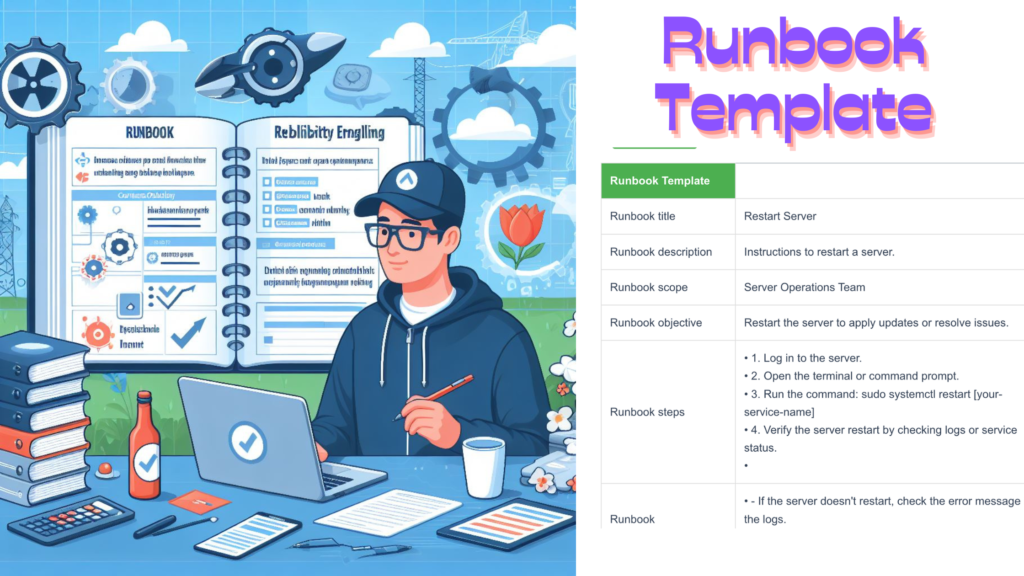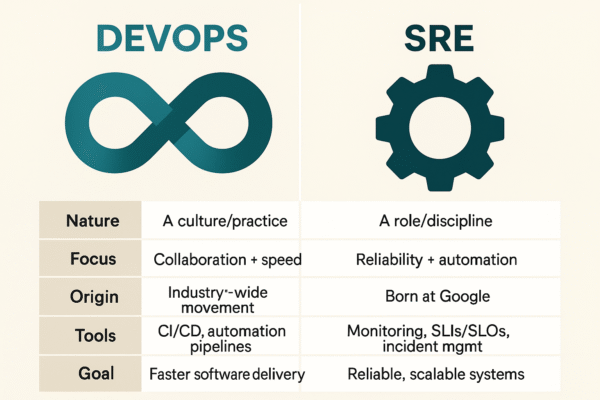In the dynamic world of DevOps, where systems are ever-evolving and incidents can occur unexpectedly, having a well-crafted runbook is akin to having a reliable recipe book. This guide will walk you through the essential elements of a DevOps runbook template, from understanding its components to incorporating automation for smoother operations.
Sample Runbook template
Understanding Runbooks:
A DevOps runbook serves as a compilation of rules and procedures designed to maintain software systems and handle incidents effectively. Think of it as your go-to guide during critical situations, providing your team with a shared knowledge base and step-by-step instructions.
Components of a Runbook Template:
A well-structured runbook template consists of several key components:
- Title and Description: Clearly outlines the task, often accompanied by a unique ID for easy filing.
- Scope and Audience: Specifies the team or department responsible for the task.
- Objective and Context: Defines the task’s purpose and the desired outcome, considering potential multiple outcomes.
- Steps and Procedures: Breaks down the task into easy-to-follow instructions, including branching paths if needed.
- Troubleshooting and FAQs: Addresses potential risks and common problems, providing solutions.
- References and Resources: Outlines trusted industry-specific resources used for the task.
Rules and Guidelines for Runbook Structure:
To ensure a user-friendly and effective runbook, adhere to these guidelines:
- Visual Aids: Include flowcharts, interface screenshots, infrastructure drawings, tables, and color coding for better understanding.
- Annotations and Text Boxes: Use these to draw attention to important information, such as notes, warnings, and process definitions.
- Organization and Formatting: Maintain consistency in font, headings, visuals, and paragraph length. Organize sections logically.
Automating Processes within the Runbook:
Automation is a game-changer for runbooks. Here’s a simple guide to integrating automation:
- Identify opportunities for automation: Look for repetitive manual tasks that can be simplified.
- Choose your automation tools: Consider scalability, infrastructure compatibility, and code language support.
- Design automation: Ensure it aligns with your current workflow, defining inputs, steps, and outputs.
- Write scripts: Use languages like PowerShell, Bash, or Python, and test them in a controlled environment.
- Document automation: Clearly explain how and why automation was created, detailing inputs, dependencies, and expected outputs.
- Add automation to the runbook: Integrate tested and documented automation into your runbook.
- Review and maintain: Regularly review the performance of your code and runbook processes, updating as needed.
Example Runbook Template: Monitor CPU Load:
Let’s simplify the theoretical with a practical example. If you need to troubleshoot high CPU usage, follow these steps:
- Open your DevOps monitoring tool of choice.
- Examine the past 48 hours of CPU usage.
- Check application relevance.
- Initiate scaling tool.
- Monitor and report changes.
- Escalate if the issue persists.
- Document and report if resolved.
8 Steps to Create an Effective Runbook Template:
- Outline purpose and objective: Define the target user and the scope of the runbook.
- Define steps: Break down each process into easy-to-follow instructions.
- Organize information: Use headings, visuals, and logical sections for clarity.
- Add FAQs and troubleshooting: Anticipate common problems and provide solutions.
- Peer reviews: Ensure readability and accuracy through peer feedback.
- Incorporate automation: Integrate scripts and automation techniques for efficiency.
- Regular checks: Periodically review and update the runbook as processes evolve.
- Continuous improvement: Incorporate user feedback and testing to enhance the runbook over time.
Conclusion:
Creating an effective DevOps runbook template is crucial for maintaining consistency, simplifying processes, and ensuring smooth operations in the face of incidents. Follow the guidelines, use visual aids, embrace automation, and continuously refine your runbook to empower your team and enhance overall system reliability. With a well-crafted runbook, navigating the complexities of DevOps becomes a streamlined and efficient process.


